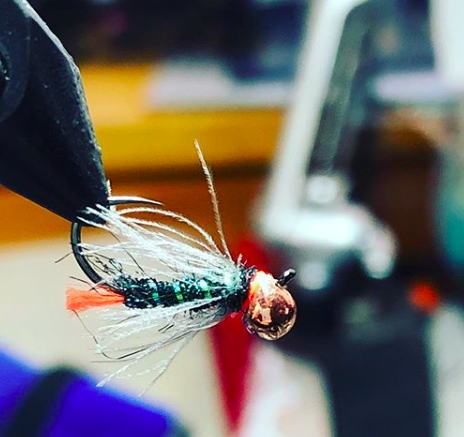We're back. Lets get this out of the way first. When building a nymphing box one of the most important considerations is diversity of bead size. Whether you're using suspension rigs or euro nymphing, having a good representation of weight will help you dial in the perfect drift. While split shot does have its place, it seems most anglers have shifted to using weight built into their flies. Whether I'm guiding or fishing personally, usually the first consideration I make when selecting a fly is bead size. I have shifted exclusively to tungsten beads so I can better predict weight adjustments based on bead mass. Dialing in a good drift is a paramount to success when nymphing. It has now gotten to the point where I look at a piece of water and know the bead size I need to achieve the desired drift. For most of where I fish and guide, 3.3mm tungsten beads provide that. With that being said, I have everything in my box from a 4.6mm tungsten bomb down to 2mm tungsten beads and weightless flies (mostly RS2s and midges). Recently I've become a fan of "inverting beads". They add a little more mass than tungsten counter sunk/slotted beads and can turn your standard nymph hooks into jig hooks. Check it out on the blow torch I tied below in the slide show.
While it feels like tungsten is all the rage, and it definitely is, brass beads still have their place. Id be lying if I said I've tied with brass beads in the last couple years, however that's because over the last couple years I've pretty much just euro nymphed. Brass beads really come in handy when fishing dry dropper rigs. Especially in smaller water and lighter rigs where you want the nymph to ride higher in the water column.
Bead Color
If you've looked at fly tying instagram or a recent catalogue lately you've seen the bead color choice has increased exponentially. In stained/off colored water I like fl orange or fl pink. White has also become a dirty water favorite. In clear water, silver is my confidence color but truth be told some of my biggest tailwater fish have come on copper beaded nymphs. I got into matte black beads for awhile as well. They definitely up the flies cool factor, but truthfully I didn't notice a difference in catch rate on pressured waters.
Hooks

90% of my nymph box is comprised of the above 4 hooks in various sizes. I find barbless hooks hold fish better and get better hook penetration.
Jigs
The majority of my nymphs are tied on jig hooks sizes #12-#18. Jigs have many advantages, like riding hook point up, snagging less on the bottom, and the MOST IMPORTANT reason. The ability to easily oversize beads without compromising hook gap! With standard hooks and beads you can usually only oversize a bead by one size. On Jigs I can put 3.8mm beads on #18 hooks. This is incredibly important if you're euro nymphing but also has lots of use in suspension nymphing as well. The ability to pack a lot of weight into a small profile is an indispensable advantage when going out for a day of fishing.

(Same hook, different bead sizes, same "hook gap").
Czech Hook
The classic "czech" hook has a place in my box for czech, caddis, and other patterns. Higas S.O.S has become a recent favorite and the "Rainbow Czech" is one of my top 4 confidence patterns. The FM czech hook is also a fish crowbar. I find myself using this platform from private water fish a lot.
Grab Gape
The grab gape hook is great short shank wide gap platform. It's sized about 2 bigger than what it is. So a #14 is more #16. Great for little pheasant tail type patterns in the smaller sizes.
Ultimate Dry Fly Hook
So much more than the name says. I use it for perdigons and other nymphs. This hook gets most use in my box as an RS2 hook. #20 is my favorite size to tie on for RS2s.
Other Hooks
As a guide on the San Juan river here in New Mexico, small flies are a must. I have lots and lots of midges but most of them are tied on Lighting Strike SE7's , Tiemco 2488 , Tiemco 200R and Daiichi 1273's. Mostly sizes #18-26
Hope this helps you narrow down the "bones" for your next nymphing box.










